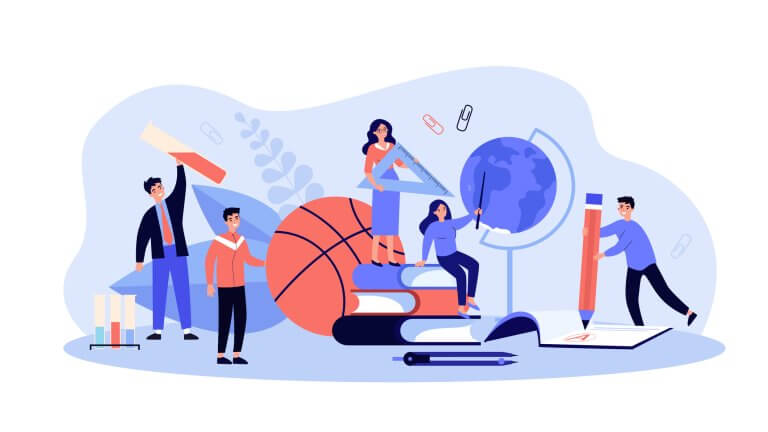So, your district has adopted High-Quality Instructional Materials (HQIM). Now what? TEA defines full-subject high-quality materials as those that ensure full coverage of Texas Essential Knowledge and Skills (TEKS), align with research-based instructional strategies (RBIS) in each subject area, and support all learners. HQIM provides educators with a full set of instructional materials that include scaffolds for all student populations. This blog addresses questions regarding HQIM lessons and units, emphasizing the importance of effective teaching through internalization and MIA ((Materials, Internalization, and Alignment).
Now that you’re being asked to use these HQIM resources, what does that mean for you and your students? These lessons and assessments are planned FOR you, but doesn’t that take away your ability—the educators and content experts—to deliver it and include your personal teaching style or favorite strategies to engage students? No. And we will explain why later in this blog. Another term frequently associated with HQIM that you’re likely encountering is “internalization.”
Let’s start with the term internalization. What does that mean in the context of HQIM? How do these two things unite to support teachers in planning most effectively and efficiently? By internalizing lesson plans, teachers can empower themselves to deliver high-quality instruction that maximizes student learning and engagement.
This blog addresses questions regarding HQIM lessons and units, emphasizing the importance of the MIA (Materials, Internalization, and Alignment) protocol as a strong approach to support HQIM implementation.
WHY? Why Internalize Lessons and Units?
Understanding: Internalizing lesson plans allows you to have a deep understanding of the content, objectives, and instructional moves. This understanding enables you to deliver the material in a way that engages your students.
Flexibility: When you have internalized your lesson plans, you are better prepared to adapt and make adjustments during instruction. You can more effectively respond to students’ questions, misconceptions, and needs.
Engagement: Internalized lesson plans facilitate more engaging lessons. Teachers confident in their understanding of the material can deliver it with their own “stamp” on the lesson.
Differentiation: When you have internalized your lesson plans, you can better differentiate instruction to meet the needs of your students. You can adjust your teaching strategies, activities, and assessments to accommodate various learning styles, abilities, and interests.
Effectiveness: Internalized lesson plans save time and effort in lesson preparation. Rather than constantly referring to written plans or spending hours looking for the perfect materials, you can focus more on interacting with students, providing feedback, and assessing learning objectives.
Professional Growth: Internalizing lesson plans is a continuous process that supports professional growth. As you reflect on your practice and work to continually upgrade your instructional techniques, you deepen your understanding of the content and improve your teaching skills over time.
Overall, effective teaching through internalization empowers teachers to deliver high-quality instruction that maximizes student learning and engagement. It allows for greater flexibility, responsiveness, and creativity in the classroom, leading to more effective teaching and learning experiences.
For more detailed information about HQIM, check out our blog, What are HQIM and RBIS?

Amy Wolfe
Texas Instructional Leadership (TIL) Administrative Specialist


How does highlighting a lesson plan “PROVE” internalization?
Teachers are being evaluated with statements that they did not internalize.. If 90% of students show mastery of the skill, that is the proof …not a piece of paper covered in pretty colors and underlines.
Thank you for your comment! It’s important to clarify that lesson internalization really doesn’t have anything to do with highlighting or marking up a lesson plan. Instead, it involves deeply understanding the lesson content, anticipating student needs, and planning instructional strategies to ensure mastery. Internalization allows teachers to make informed, real-time adjustments to better support students, rather than focusing on lesson plan formatting. We appreciate your engagement with this topic and your desire for clarity!
How do I maximize the internalization process without wasting excess amounts of time when there is already so little time?
There are a few factors that are important to consider: What instructional materials are being used? What are the campus expectations around internalization protocols? What is expected for teachers to do to prepare for collaborative internalization PLCs? To maximize the processes it is beneficial to have a protocol to follow, based on best practices. Having clear and aligned expectations help ensure consistency across the campus/district. It may also be helpful for campus leaders to prioritize the most important elements of internalization and build on additional elements over time, as teachers learn, implement, and develop strong habits.
In what ways have students and/or teachers been evaluated to show the benefits of internalization? How can I become better at internalization?
In what ways have students and/or teachers been evaluated to show the benefits of internalization?
The benefits of internalization is coupled with the use of high quality instructional materials and therefore providing students with access to grade level curriculum and content. There is further research to support internalization versus traditional lesson planning. “The Opportunity Myth” from TNTP offers research about how internalization helps bridge the gap between students not having access to grade-level assignments and teachers who feel they don’t have a deep familiarity with their content.
In Leverage Leadership by Paul Bambrick Santoyo, he discusses how internalization drives lesson execution which, in turn, affects students’ academic growth.
Internalization is also aligned to TTess and most products to help teachers become more familiar with the materials to help with the ease of use.
How can I become better at internalization?
Learning anything new requires practice, repetition and reflection. Internalization can feel overwhelming and time consuming in the beginning. But like with anything new, after some time, internalization will become more efficient and take less time. Also, using a protocol to help guide the work will help build muscle memory with the process of internalization.
It is also helpful if there is a team to calibrate and collaborate with about the internalization process as well as content, pedagogy, and adjustments for students. Oftentimes, teachers are a team of one- so that presents different challenges for collaboration. Campuses in that situation utilize vertical teams, instructional coaches and administrators to help support the work.